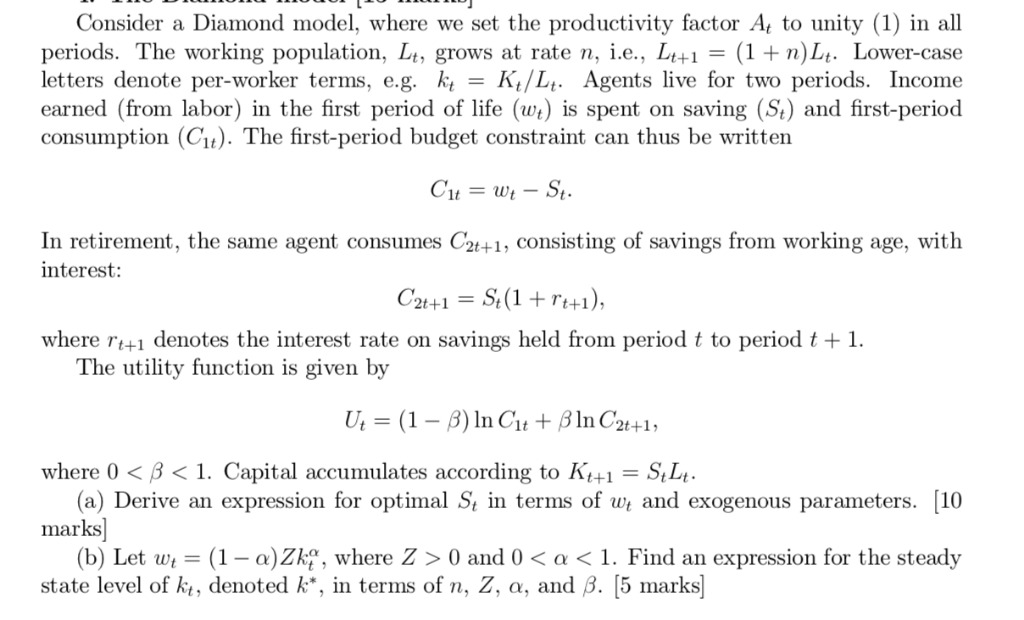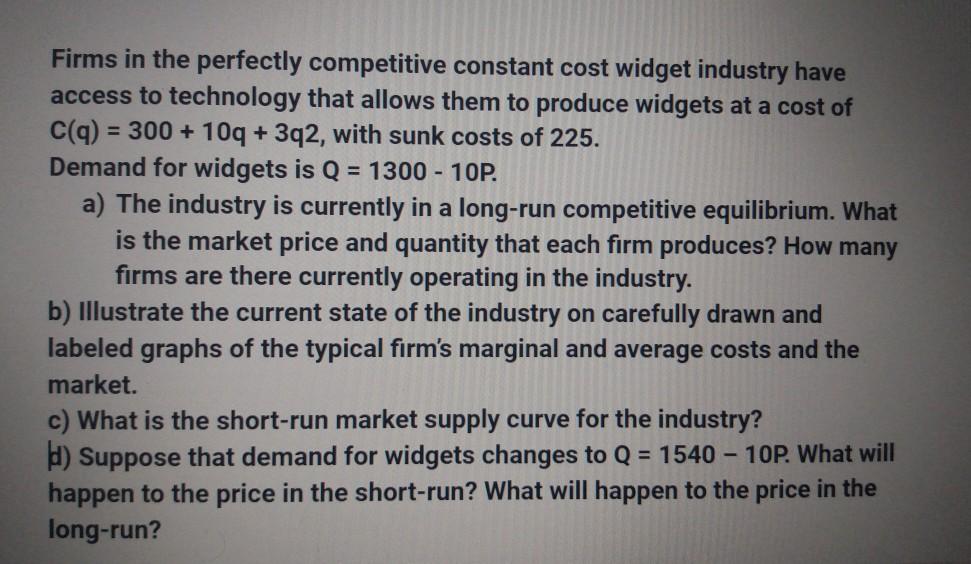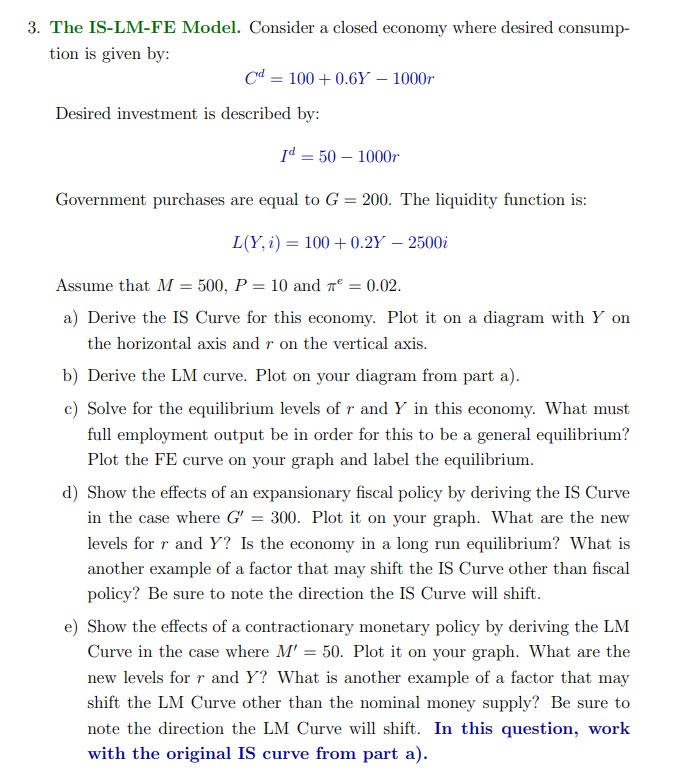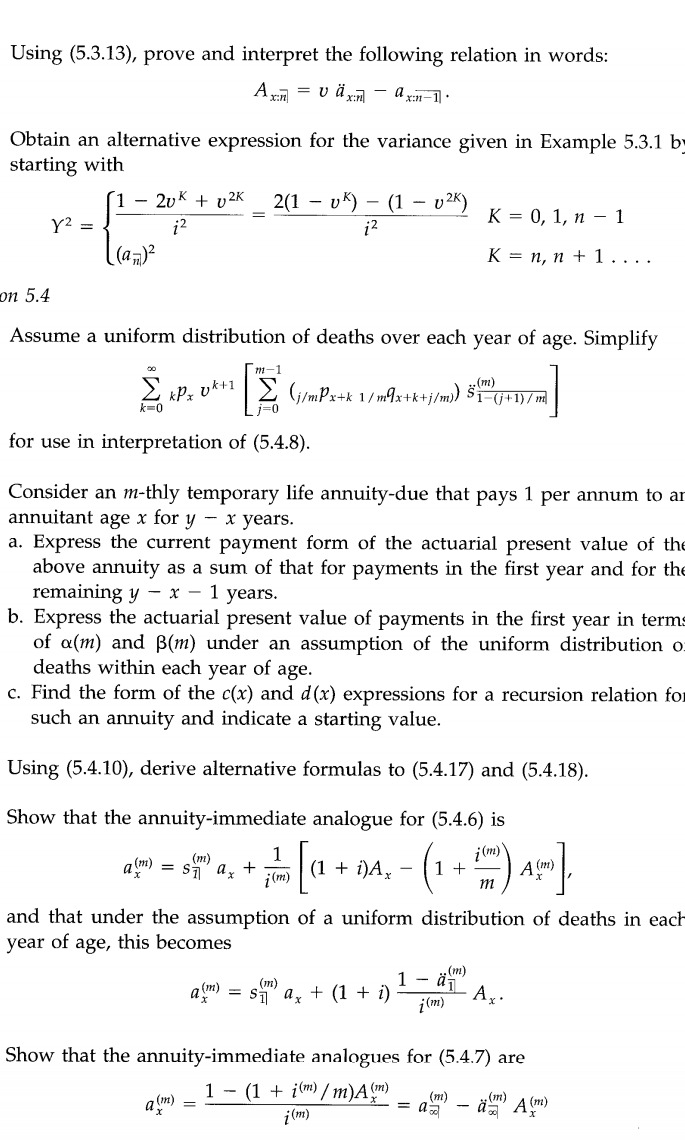Explain, the following attachments.
"'""" " '\"'\""""' ---...........- I." \"""'" ""1 Consider a Diamond model, where we set the productivity factor A; to unity (1) in all periods. The working population, Lg, grows at rate R, i. e., Li\": (1 + n)L. Lower-case letters denote perworker terms, e.g. k, = K,/L,. Agents live for tam periods. Income earned (from labor) in the rst period of life (10,) is spent on saving (3,) and rstperiod consumption (Cu). The rst-period budget constraint can thus be written 011 = to: ' 31. In retirement, the same agent consumes 02,\Firms in the perfectly competitive constant cost widget industry have access to technology that allows them to produce widgets at a cost of C(q) = 300 + 10q + 3q2, with sunk costs of 225. Demand for widgets is Q = 1300 - 10P. a) The industry is currently in a long-run competitive equilibrium. What is the market price and quantity that each firm produces? How many firms are there currently operating in the industry. b) Illustrate the current state of the industry on carefully drawn and labeled graphs of the typical firm's marginal and average costs and the market. c) What is the short-run market supply curve for the industry? d) Suppose that demand for widgets changes to Q = 1540 - 10P. What will happen to the price in the short-run? What will happen to the price in the long-run?3. The IS-LMFE Model. Consider a closed eoonomy where desired consump- tion is given by: Cd = 1m + car 1cm? Desired investment is described by: I? = 50 lr Government purchases are equal to G = 2st}. The liquidity function is: MY, 2') = 1m + 0.2? 25an Assume that M = 5m}, P = 1'0 and an"! = H.132. 3} b} 8} Derive the IS Curve for this economy. Plot it on a diagram with Y on the horizontal axis and r on the vertical axis. Derive the LM curve. Plot on your diagram from part a). Solve for the equilibrium levels of r and Y in this economy. What must full employment output be in order for this to be a. general equilibrium? Plot the FE curve on your graph and label the equilibrium. Show the effects of an expansionary scal policy by deriving the IS Curve in the case where {3\" = 3013. Plot it on your graph. What are the new levels for r and 1"? Is the economy in a. long run equilibrium? What is another example of a factor that may shift the IS Curve other than scal policy? Be sure to note the direction the IS Curve will shift. Show the elfects of a contractionary monetary policy by deriving the LM Curve in the case where M\" = 5!]. Plot it on your graph. What are the new levels for r and Y? What is another example of a factor that may shift the LM Curve other than the nominal money supply? Be sure to note the direction the LM ICurve will shift. In this question, work with the original IS curve from part a]. Using (5.3.13), prove and interpret the following relation in words: Arn = Udxn - axn-1 . Obtain an alternative expression for the variance given in Example 5.3.1 b starting with 1 - 20 + 2K _ 2(1 - Uk) - (1 - U2K) Y2 = 12 K = 0, 1, n - 1 ((a 7 7 )2 K= n, n +1 . . .. on 5.4 Assume a uniform distribution of deaths over each year of age. Simplify [ (jimPxt* 1 / mixtiti/ ml) $1- (+1)/md for use in interpretation of (5.4.8). Consider an m-thly temporary life annuity-due that pays 1 per annum to a annuitant age x for y - x years. a. Express the current payment form of the actuarial present value of the above annuity as a sum of that for payments in the first year and for the remaining y - x - 1 years. b. Express the actuarial present value of payments in the first year in term of a(m) and B(m) under an assumption of the uniform distribution o deaths within each year of age. c. Find the form of the c(x) and d(x) expressions for a recursion relation for such an annuity and indicate a starting value. Using (5.4.10), derive alternative formulas to (5.4.17) and (5.4.18). Show that the annuity-immediate analogue for (5.4.6) is a(m) = ] ax + i(m) (1 + DA, - (1+ 1 ) A ( ] . and that under the assumption of a uniform distribution of deaths in each year of age, this becomes am) = s7 a, + (1 + i) 1 - a1 i (m) -Ax. Show that the annuity-immediate analogues for (5.4.7) are a(m) = 1 - (1 + i(") / m)Agn) (m) _ i (m) as A (m)










